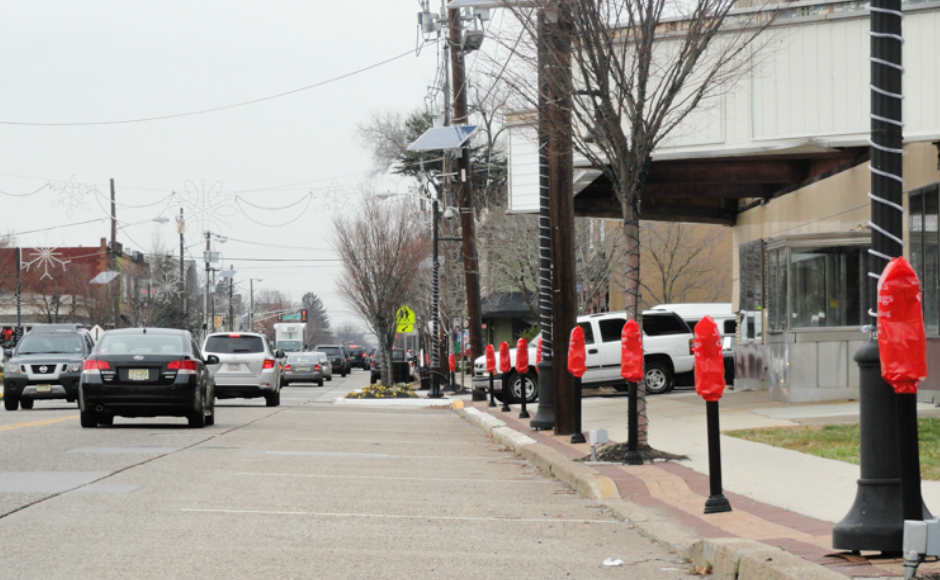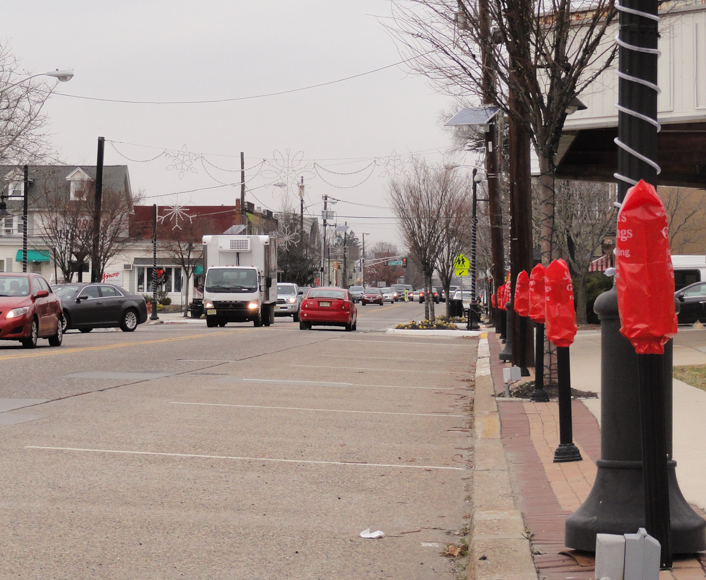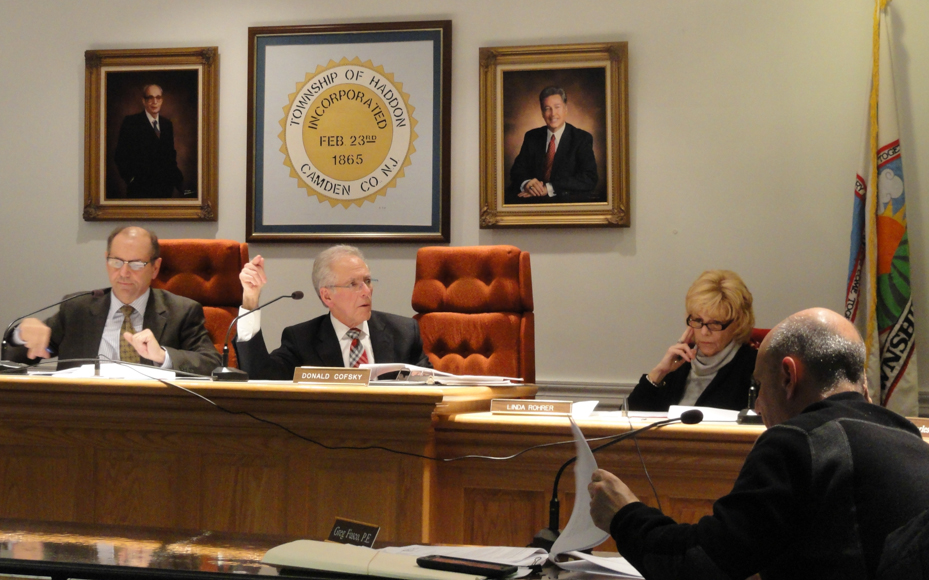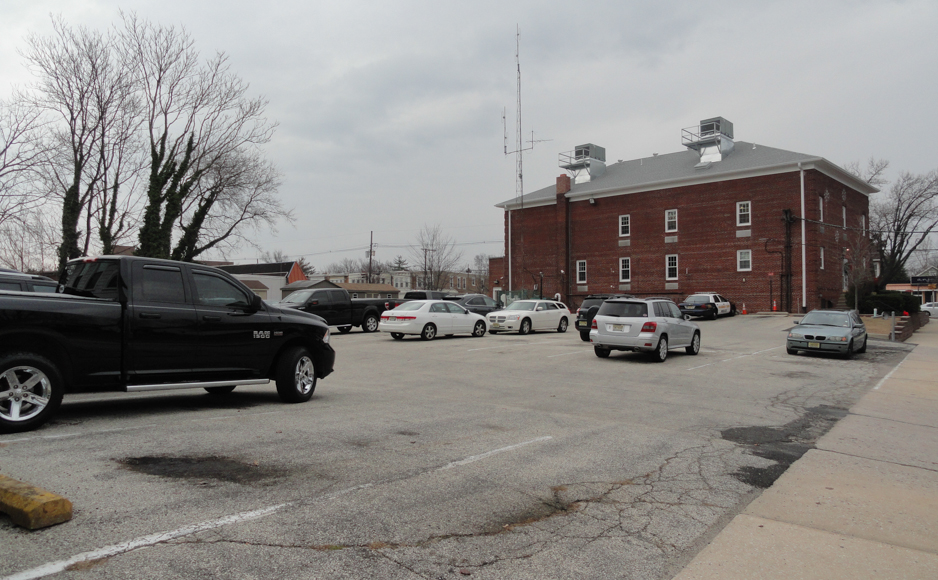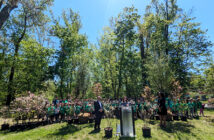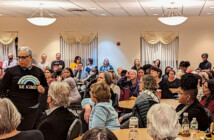Recommendations made at the December Planning Board meeting included relaxing parking requirements for small businesses and converting the municipal lot into an after-hours public lot.
By Matt Skoufalos
Depending upon who you ask, parking in the Haddon Township downtown shopping district is either tough on residents or tough on businesses.
Prospective owners of properties along Haddon Avenue have found parking can be a challenge to overcome, thanks to a township ordinance that mandates 5.5 parking spaces per 1,000 square feet for retailers.
Residents of the numerous side streets that adjoin the Avenue say they are similarly challenged, but by discourteous bar and restaurant patrons who block their driveways when business lots are overfull.
The solution to both issues might not be far off.
At the December meeting of the township Planning and Zoning Board, Haddon Township engineer Gregory Fusco presented recommendations to the body for freeing up additional downtown parking and offering some relief to smaller businesses that lack the off-street parking required by local statute.
Taking inventory
As a jumping-off point, Fusco researched the structure of parking regulations in neighboring Haddonfield and Collingswood.
Haddonfield, he reported, requires businesses in its downtown shopping district to allot three parking spaces per every 1,000 square-feet of retail space, which translates into some 1,200 parking spaces for 420,000 square-feet of retail.
Parking in restaurant-heavy Collingswood is calculated at a rate of one parking space per three seats of an eatery, Fusco said. He tallied the on-street, metered parking in the borough at some 130 to 153 spaces, including municipal parking lots.
“If you convert those spaces into seats, there’s about 850 seats that could be generated in all the eateries in Collingswood,” Fusco said.
In Haddon Township, however, the math gets fuzzier. The 147 metered parking spaces Fusco counted on Haddon Avenue only translate to 441 restaurant seats. He counted another 40 unmetered spaces along the first half-blocks of streets that intersect Haddon Avenue.
But many businesses along Haddon Avenue enjoy an off-street parking advantage over their neighbors in Haddonfield and Collingswood, Fusco said. Counting the Westmont theater property, which Fusco said “can create literally 80-100 spaces,” the Haddon Township business district holds some 864 off-street parking spaces.
The trouble comes, Fusco said, in using either the seating or square-footage calculus for determining statutory parking obligations. Within the downtown business district, he counted 36 storefronts, all smaller than 1,000 square-feet, that “cannot provide parking for the tenants on their property,” and suggested that holding them to such a standard is unreasonable.
“If you look at those 36 establishments—and you know that’s where they’re parking, on the street—why are we making them come to the planning board?” he asked the body.
“If a new establishment opens up, it’s impossible for them to comply with our ordinance. There’s a couple of places on the White Horse Pike that have the same situation, and the only place they can park is on the Pike.”
Finding a workaround
Instead of changing the entire downtown parking requirements to conform with three spaces for every 1,000 square-feet, or one for every three seats in a restaurant—a measure for which some current businesses have already received variances—Fusco recommended that the board consider exempting storefronts of fewer than 1,000 square-feet from any parking requirement.
Holding businesses to the three-spaces-per-1,000-square-feet standard still creates a deficiency of 66 parking spaces, however, “and the board knows about this deficiency because these people have come before us and asked for variances, and we’ve looked at the off-street parking and it’s been approved,” Fusco said.
Furthermore, Fusco believes that pedestrian behavior will support a walk of a block or two for the businesses they patronize. In Haddonfield and Collingswood, he told the board, “if you have to go to the municipal lots, you have a good three or four blocks to walk.
“On Haddon Avenue, I feel it’s the same situation,” Fusco said. “Walking is an important part of this whole analysis.”
Fusco also said that another 25 spaces could be creating by turning the area behind the municipal building into an after-hours public lot and parking the Haddon Township police vehicle fleet elsewhere—an approach that Director of Public Works Jim Stevenson said his department has analyzed.
“In terms of a professional planning aspect, I don’t really think there’s a parking issue on the Avenue,” Fusco said. “I don’t really think there’s a parking issue on the White Horse Pike, either. The only change that should be made would be a change for those [1,000-square-foot] storefronts.”
Such an ordinance would also support the ease of doing business among those storefronts that change hands–and often, use–but still retain a sub-1,000-square-foot area.
Discussion
The board discussed Fusco’s recommendations at length.
Kate Burns, who oversees the Haddon Township Business Improvement District (BID), testified about the impact of parking requirements on business recruitment; specifically, Burns described the buildings that house the Sports4All batting cages and Mission MMA as being “very difficult to fill” under the current parking statute.
“We couldn’t get a restaurant in there because of the parking requirements,” she said.
“I have a juice bar that would like to go in across from Dunkin Donuts, and they won’t go into this town because there’s parking requirements,” Burns said.
“The master plan wants to see outdoor cafes and businesses. It wants to see people walking the town,” she said.
“I don’t think it’s fair to tie parking to seating,” planning board member Nick Mink said.
“The restaurant owners may add seats, take away seats; in the end it may not really matter” if building occupancy is tied to the fire code, he said.
Stevenson, who grew up on East Walnut Avenue, recollected that “there was never a [parking]problem” in Haddon Township “because people had one car.”
Comparatively, he said, the Haddon Avenue bar scene can and often does push patrons into the neighborhoods, leaving residential areas like that of Chestnut Street “a substantial problem” for planners.
“There probably should be no parking allowed on Chestnut Street for the width of the road, but that’s a whole different problem,” Stevenson said.
“We have the opportunity to give [businesses]some relief, but you can’t just eliminate the parking requirement,” he said. “Everything is based on use. I think we take it little by little.
“We still can come back and review this in another year,” he said.
‘Something we’re going to have to monitor’
Haddon Township native Doug Kelly, owner of Blue Salon and overseer of the Westmont Farmers Market, said that relaxing parking requirements for smaller businesses in the BID is a good first step, but that such regulations should be done away with altogether.
“The idea of requiring parking is preposterous,” Kelly said. “It’s an old-school thinking.
“We do not have a parking problem in Haddon Township,” Kelly said. “We have space. You can park anywhere, and you get 11 minutes free. After 6 p.m. it’s free. I’ve never seen [Haddon Avenue] full, ever.”
Haddon Township Mayor Randy Teague agreed with some of Kelly’s assessments.
“I don’t think there’s a parking problem,” Teague said. “If you want to go to a business on Haddon Avenue, you can find parking on Haddon Avenue.”
The problem, the mayor said, is “not so much a lack of parking, but where some of the patrons are choosing to park.”
Residents on Chestnut Avenue, which adjoins the parking lot shared by Bricco and the Pour House, have advocated for “mark[ing]out permit parking” on the block, Teague said—an option that Haddon Township police did not support when it was first proposed.
“One of the issues [residents]were having was people taking up a foot or two into their driveway and not parking properly,” he said.
However, Teague pointed out, scaling back parking requirements “may cause some additional spillover onto Chestnut and some of the other residentials.”
“It’s something that we’re going to have to monitor as we progress,” he said.
Get more local news that matters. Check out NJ Pen on Facebook and Twitter.

